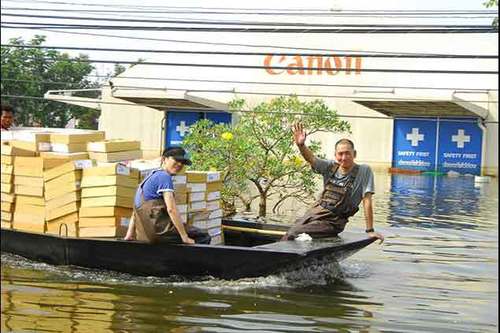Feb 27 2012
How natural disasters test Lean supply chains
Via Scoop.it – lean manufacturing
The floods in Thailand are the latest. Before, there was the Fukushima earthquake and, going back further in time, the Aisin Seiki fire of 1997 in Japan and the Mississippi flood of 1993… Each time, the press has faulted Lean for making the economic disruptions caused by theses events worse. The actual record is that the vigilance inherent in Lean Logistics and the strength of customer-supplier relationships in a Lean Supply Chain are in fact key to a rapid recovery.
In 1993, Toyota logisticians in Chicago reserved all the trucking available in the area a few days before the flood cut off the rail lines to California, thereby allowing the NUMMI plant to keep working during the flood.
In 1997, when the Aisin Seiki fire deprived Toyota in Japan of its single source of proportioning valves, other suppliers came to the rescue in what the Wall Street Journal a few months later called the business equivalent of an Amish barn raising.
You can, and should protect production against routine fluctuations. That is what tools like Kanbans are countermeasures for. But there is no way you can afford to protect your business against all possible, rare catastrophic events. What you can and must do instead is be vigilant and prepared to respond quickly and creatively to whatever nature or society might throw at you.
Via the Bangkok Post

“The Fragility of Lean is its Strength” | Michael Ballé | Michel Baudin's Blog
October 2, 2013 @ 10:42 am
[…] don”t have zero stocks, but low stocks, and the experience of disasters — from the Mississippi flood of 1993 in the US, to the Aisin Seiki fire of 1997 and the Fukushima earthquate of 2011 in Japan — […]
When Bad Things Happen to Good Supply Chains | Industry Week | Michel Baudin's Blog
October 18, 2013 @ 6:57 am
[…] lesson I see in Toyota’s response to emergencies, from the Mississippi flood of 1993 to the Aisin Seiki fire of 1997 and the Fukushima earthquake of […]